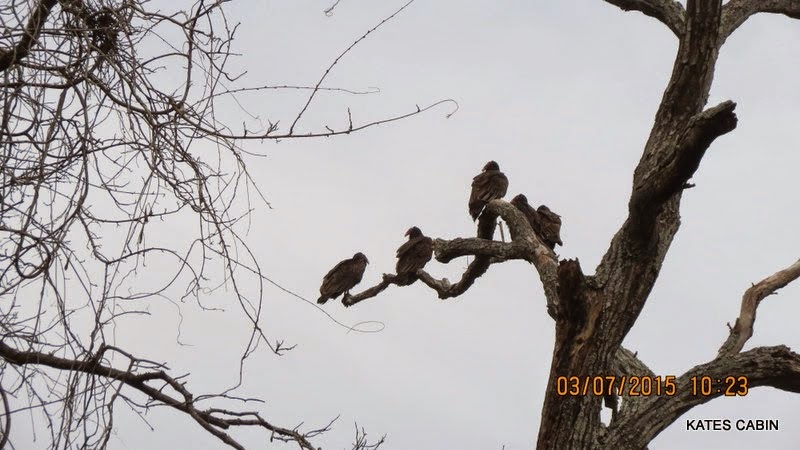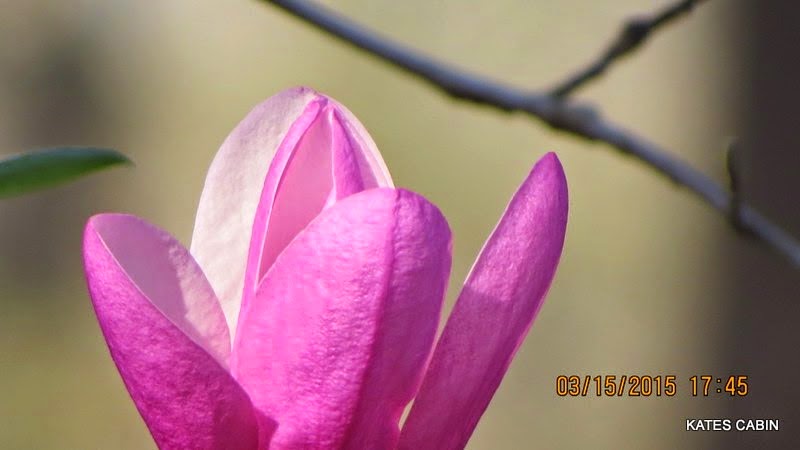
Hi Everybody!!
Welcome back to the Spring Parade of Blooms in progress now at Kates Cabin Bird Sanctuary. Today we are looking at the gorgeous pink blossoms of the Apricot Tree, who is really putting on a show this year! This tree was adapted to grow in Texas with less chill hours required to produce fruit (unlike varieties that grow up North). I have shared below a Wikipedia excerpt with info on Apricots, for those of you wanting to know more about this tree. Find the right tree for your growing zone and you will enjoy this tree for many years. Enjoy!

link to G+ Photo Album:
https://plus.google.com/u/0/photos/117645114459863049265/albums/6127756262910932609



Info from Wikipedia Page:
https://en.wikipedia.org/wiki/Apricot
An apricot is a fruit or the tree that bears the fruit. Usually, an apricot tree is from the tree species Prunus armeniaca, but the species Prunus brigantina, Prunus mandshurica, Prunus mume, and Prunus sibirica are closely related, have similar fruit, and are also called apricots.[1]
The apricot is a small tree, 8–12 m (26–39 ft) tall, with a trunk up to 40 cm (16 in) in diameter and a dense, spreading canopy. The leaves are ovate, 5–9 cm (2.0–3.5 in) long and 4–8 cm (1.6–3.1 in) wide, with a rounded base, a pointed tip and a finely serrated margin. The flowers are 2–4.5 cm (0.8–1.8 in) in diameter, with five white to pinkish petals; they are produced singly or in pairs in early spring before the leaves. The fruit is a drupesimilar to a small peach, 1.5–2.5 cm (0.6–1.0 in) diameter (larger in some modern cultivars), from yellow to orange, often tinged red on the side most exposed to the sun; its surface can be smooth (botanically described as: glabrous) or velvety with very short hairs (botanically: pubescent). The flesh is usually firm and not very juicy. Its taste can range from sweet to tart. The single seed is enclosed in a hard, stony shell, often called a "stone", with a grainy, smooth texture except for three ridges running down one side.[2][3]
The origin of the apricot is disputed. It was known in Armenia during ancient times, and has been cultivated there for so long that it is often thought to have originated there.[4][5] Its scientific name Prunus armeniaca (Armenian plum) derives from that assumption. For example, the Belgian arboristbaron de Poerderlé, writing in the 1770s, asserted, "Cet arbre tire son nom de l'Arménie, province d'Asie, d'où il est originaire et d'où il fut porté en Europe ..." ("this tree takes its name from Armenia, province of Asia, where it is native, and whence it was brought to Europe ...").[6] An archaeological excavation at Garni in Armenia found apricot seeds in an Eneolithic-era site.[7] Despite the great number of varieties of apricots that are grown in Armenia today (about 50),[5] according to the Soviet botanist Nikolai Vavilov its center of origin would be the Chinese region, where the domestication of apricot would have taken place. Other sources say that the apricot was first cultivated in India in about 3000 BC.[8]
Its introduction to Greece is attributed to Alexander the Great;[8] later, the Roman General Lucullus (106–57 BC) also would have imported some trees – the cherry, white heart cherry, and apricot – from Armenia to Rome[citation needed]. Subsequent sources were often confused about the origin of the species. John Claudius Loudon (1838) believed it had a wide native range including Armenia, the Caucasus, the Himalayas, China, and Japan.[9]
Apricots have been cultivated in Persia since antiquity, and dried ones were an important commodity on Persian trade routes. Apricots remain an important fruit in modern-day Iran, where they are known under the common name of zard-ālū (Persian: زردآلو).
Egyptians usually dry apricots, add sweetener, and then use them to make a drink called amar al-dīn.
In the 17th century, English settlers brought the apricot to the English colonies in the New World. Most of modern American production of apricots comes from the seedlings carried to the west coast by Spanish missionaries. Almost all U.S. commercial production is in California, with some inWashington and Utah.[10]
Many apricots are also cultivated in Australia, particularly South Australia, where they are commonly grown in the region known as the Riverland and round the small town of Mypolonga in the Lower Murray region of the state. In states other than South Australia, apricots are still grown, particularly inTasmania and western Victoria and southwest New South Wales, but they are less common than in South Australia.
Today, apricot cultivation has spread to all parts of the globe with climates that support it.






The last days of the Buzzard Migration
Link to G+ Photo Album:
https://plus.google.com/u/0/photos/117645114459863049265/albums/6123961206382987393





...this is brendasue signing off from Rainbow Creek. See you next time!

O+O

No comments:
Post a Comment